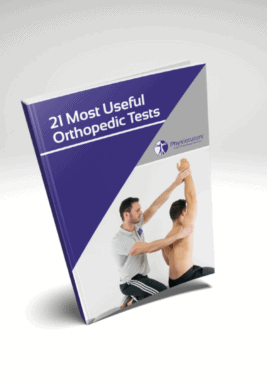Learn
Myotomes Upper Limb | Peripheral Neurological Examination
Myotome assessment is an essential part of neurological examination when suspecting radiculopathy as changes in muscle strength within a specific myotome may help you identify the pathological disc level.
In the case of the cervical spine, the most common causes of nerve root pathology are herniated discs, which account for about 20-25% of cases, and degenerative disc disease which accounts for 70-75%. While herniated discs also known as soft disc lesions are rather seen in younger patients, degenerative disc disease or hard disc lesions primarily occur in the older population and the highest incidence of cervical nerve root pathology is found on spinal segments C5-6 and C6-7, which will mainly affect the biceps & wrist extensors or triceps & Wrist flexors.
in their systematic review from 2017, Lemeunier et al. report that a complete peripheral neurological examination when suspecting cervical radiculopathy has a sensitivity of 83% and specificity of 28%. The positive and negative likelihood ratios were 1.15 and 0.6 respectively, which is why we attribute this assessment a rather weak clinical value but it is still the best tool we have.
>Myotome testing of the upper extremity is done with the patient in sitting position. As with pretty much any assessment, compare your findings on both sides.
C4/5: deltoid (24% Sn, 89% Sp)
With the patient in sitting position, ask the patient to abduct the arms to approximately 90° and then apply downward pressure to the arms. Look for side-by-side differences.
C5/6: Biceps brachii (24% Sn, 94% Sp)
C5/6: wrist extensors, (12% Sn, 90% Sp)
To test the biceps, flex the forearm to 90° and ask your patient to resist the extension force applied by you. Check for noticeable side-by-side strength differences. To best test the wrist extensors, place the patient’s pronated forearm on the table and position the closed fist into slight extension and apply a wrist flexion force to it. Ask the patient to resist and check for weakness and compare with the other side.
C6/7: triceps brachii (12% Sn, 94% Sp)
C6/7: wrist flexors (6% Sn, 89% Sp)
To test the triceps, flex the forearm to 90° and ask your patient to resist the flexion force applied by you.
To best test the wrist flexor, place the patient’s supinated forearm on the table and position the closed fist into slight flexion and apply a wrist extension force to it. Ask the patient to resist and check for weakness and compare with the other side.
C7/C8: abductor pollicis (6% Sn, 84% Sp)
T1: dorsal interosseous (3% Sn, 93% Sp)
For the abductor pollicis brevis support the supinated forearm and open hand and ask the patient to resist thumb adduction. Compare both thumbs and check for differences.
For the dorsal interosseous muscles, interlock your fingers between your patient’s fingers and ask them to squeeze as hard as possible. Check for noticeable side-by-side differences.
21 OF THE MOST USEFUL ORTHOPAEDIC TESTS IN CLINICAL PRACTICE

Other parts of the neurological examination of the upper limb are:
For the lower limb, the neurological examination can be studied here:
References
Like what you’re learning?
BUY THE FULL PHYSIOTUTORS ASSESSMENT BOOK
- 600+ Pages e-Book
- Interactive Content (Direct Video Demonstration, PubMed articles)
- Statistical Values for all Special Tests from the latest research
- Available in 🇬🇧 🇩🇪 🇫🇷 🇪🇸 🇮🇹 🇵🇹 🇹🇷
- And much more!








